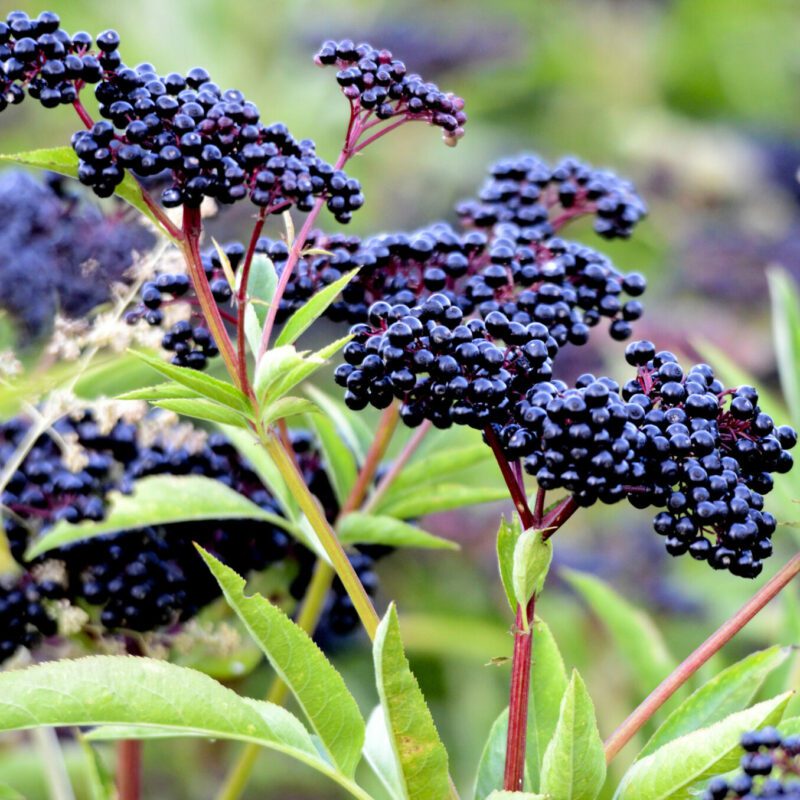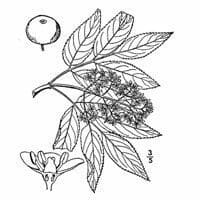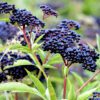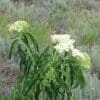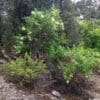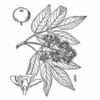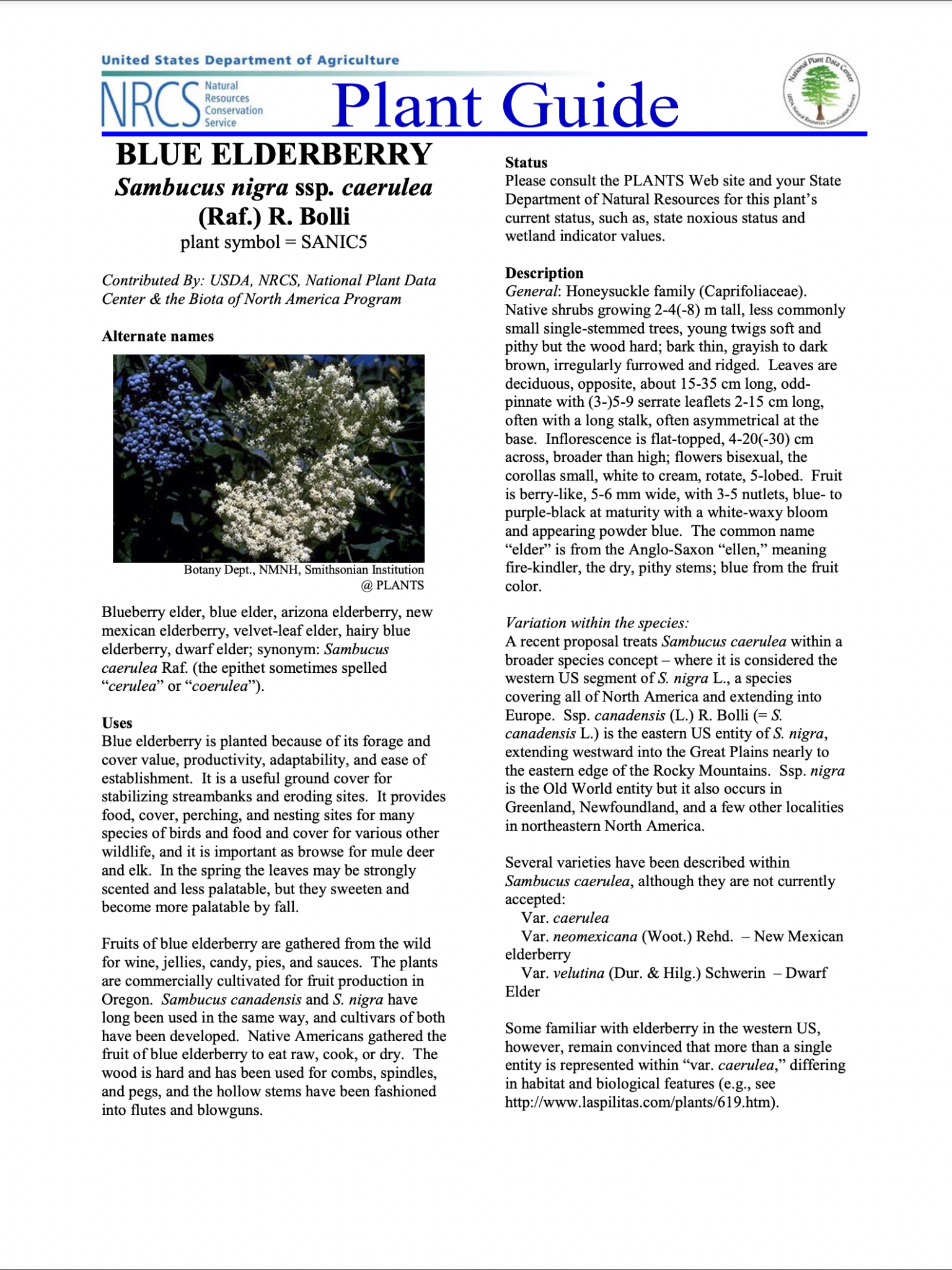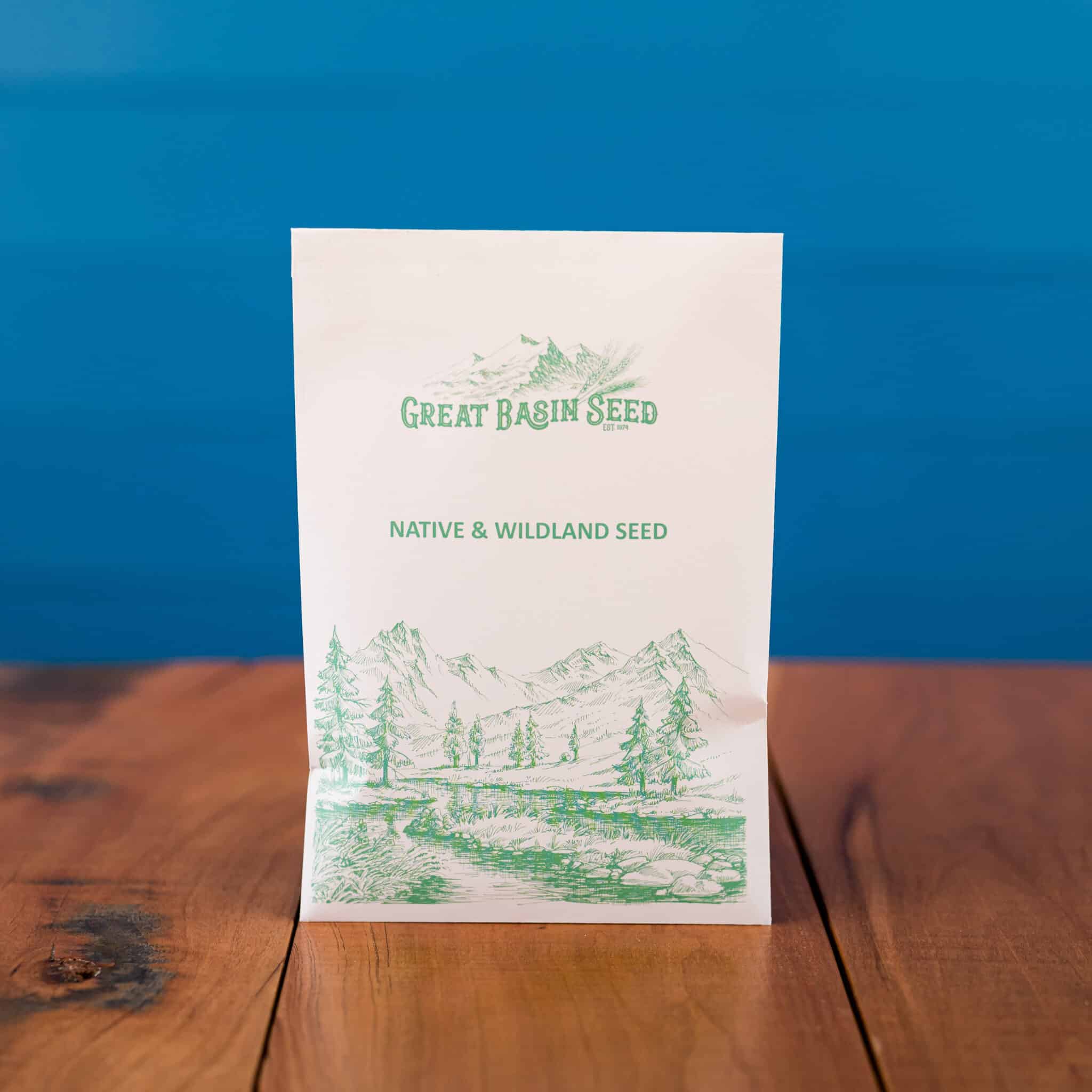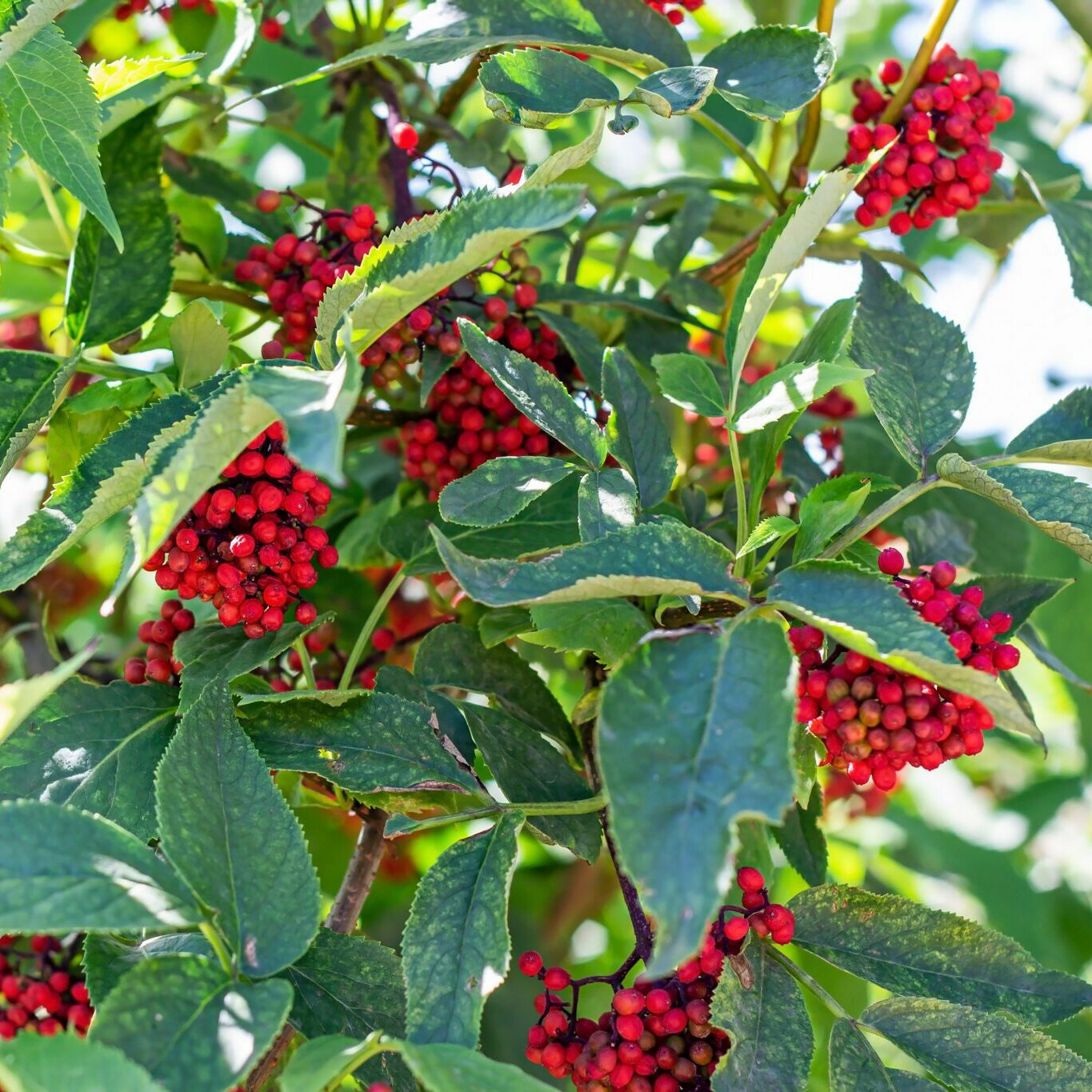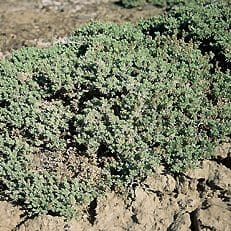Blue Elderberry
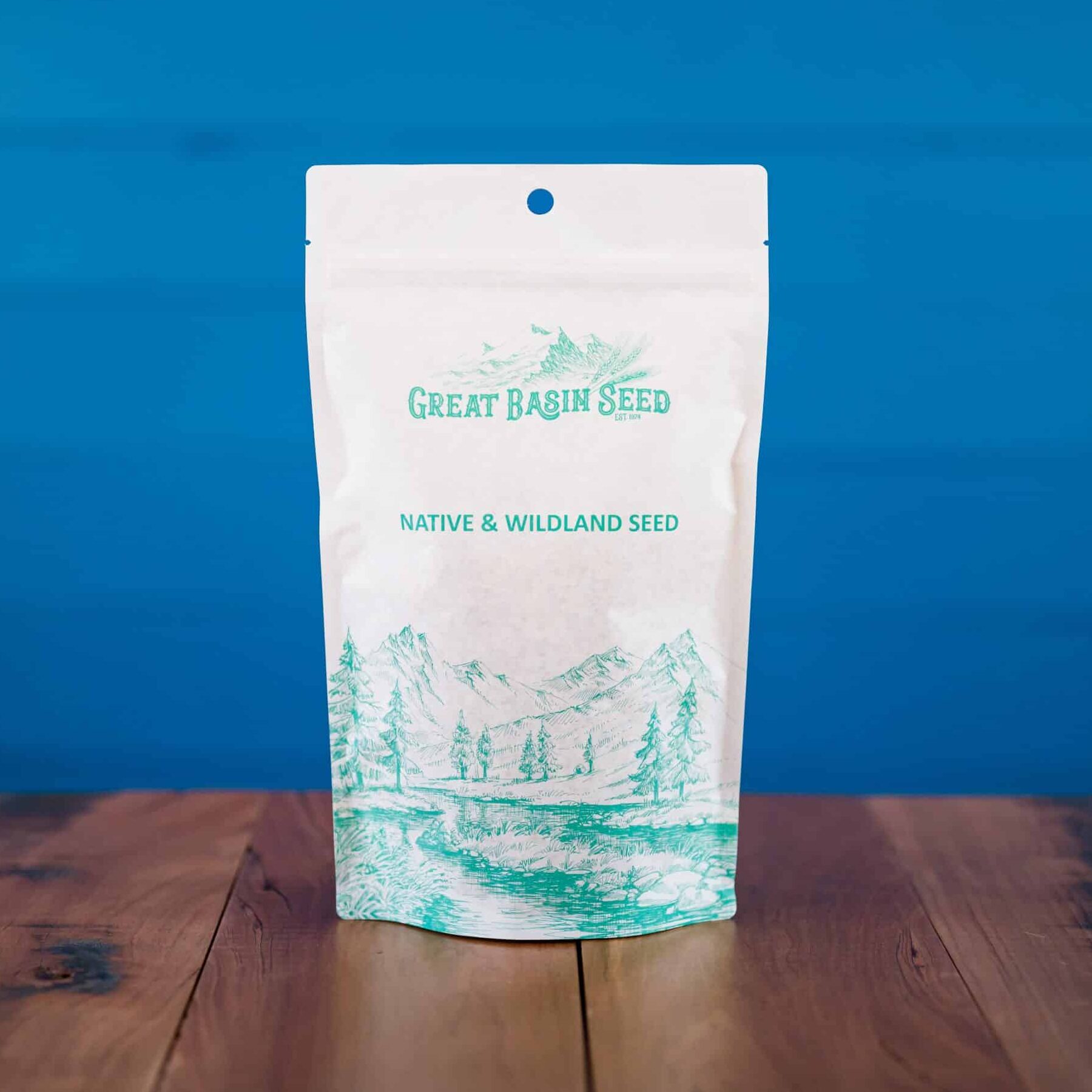 $9.35 – $74.55
$9.35 – $74.55 Blue Elderberry
- Scientific name: Sambucus cerulea
- Can grow up to 16′ tall
- More common on warmer sites than red elderberry
- Edible, commonly used in jams and syrups
- Source of summer food for many wildlife species
Blue Elderberry (Sambucus cerulea) is a native shrub, a member of the honeysuckle family. It can grow up to 16′ tall. It is common along stream banks, river banks, and open places in riparian areas. It is widely distributed from west Texas north to Montana, western Alberta, and southern British Columbia, and all other western states, south into northwest Mexico.
Blue elderberry (Sambucus cerulea) grows on moist, well-drained sunny sites, usually occurring in early seral communities or in openings in moist forest habitats (slopes, canyons, cliff bases, streamsides, streambanks) and moist areas within drier, more open habitats (sagebrush, mountain brush, pinyon-juniper, ponderosa pine, often along fence rows and roads); from sea level to 10,000′ Blue elderberry is a dominant understory species in riparian woodlands. It can persist past seral stages as scattered individuals in open forests, woodlands, chaparral, or riparian zones. This species flowers from May to September and fruits from July to October. Blue elderberry is more common on warmer sites than red elderberry (Sambucus racemosa), although they overlap in habitat preference.
Elderberries are quite edible. The blue or purple berries are gathered and made into elderberry wine, jam, syrup, and pies. Fruits of blue elderberry are gathered from the wild for wine, jellies, candy, pies, and sauces. The plants are commercially cultivated for fruit production in Oregon.
Game birds, squirrels and other rodents, and several kinds of browsers also feed on the fruit or foliage of elderberry. Bears love to eat the elderberry fruits while deer, elk, and moose browse on the stems and foliage. The elderberries are important sources of summer food for many kinds of songbirds. For example, the western bluebird, indigo bunting, common house finch, red-shafted flicker, ash- throated flycatcher, black-headed grosbeak, scrub jay, Stellar jay, ruby-crowned kinglet, mockingbird, red-breasted nuthatch, Bullock’s oriole, hooded oriole, song sparrow, white-crowned sparrow, western tanager, California thrasher, russet-backed thrush, brown towhee, Audubon warbler, cedar waxwing, Lewis and Nuttall’s woodpecker, wren-tit, grouse, pheasant, and pigeons all eat elderberries (Martin et al. 1951).
Blue elderberry is planted because of its forage and cover value, productivity, adaptability, and ease of establishment. It is a useful ground cover for stabilizing streambanks and eroding sites. It provides food, cover, perching, and nesting sites for many species of birds and food and cover for various other wildlife, and it is important as browse for mule deer and elk. In the spring, the leaves may be strongly scented and less palatable, but they sweeten and become more palatable by fall.
*** Click on the “Quick Plant Facts” tab above for more information.***
Blue Elderberry NRCS Plant Guide and Fact Sheet
Blue Elderberry NRCS Plant Guide and Fact Sheet
PDF version of NRCS Plant Guide & Fact Sheet
Prepared By: Guy Nesom BONAP, North Carolina Botanical Garden, University of North Carolina, Chapel Hill, North Carolina
Species Coordinator: Lincoln Moore USDA, NRCS, National Plant Data Center, Baton Rouge, Louisiana
Helpful Links
Additional information about this product can be found on the academic websites linked below.
Synonyms
Many plants have more than one common and scientific name. We've listed a few of them below.
- Blue Elderberry
- Sambucus cerulea
- Blue Elder
- Arizona Elderberry
- American Elder
- Sweet Elder
- Wild Elder
- Danewort
- Walewort
- New Mexican Elderberry
- Velvet-Leaf Elder
- Hairy Blue Elderberry
- Dwarf Elder
Who is Great Basin Seed?
Great Basin Seed is a seed company that specializes in seed sales and consultation for home, ranch, farm, range and reclamation. We have been a leader in the seed industry since 1974.
Our History
We've been in the seed business since 1974.
What We Offer
We offer seed for home, farm, ranch, range and reclamation projects.
Meet the Gang
We have the best employees in the world! We are proud of the work they do, and trust them to serve you!
Right: Company founder Lloyd and his wife Paula Stevens in a wildflower seed production field circa 1977
Quick Plant Facts
| Common Name: | American Elderberry |
|---|---|
| Scientific Name: | |
| Lifespan: | |
| Origin: | |
| Plant Type: | |
| pH Tolerance: | |
| Seed Count | 216800 |
| Growth Height: | |
| Min. Precipitation | 12 Minimum |
| Best Time to Sow: | |
| Max Sowing Depth: | |
| Growth Season: | |
| Sun & Shade Tolerance: | Full Shade Tolerant, Full or Partial Sun |
| Zone Map | comingsoon.gif |
| Hardiness Zones: | |
| Select a Package Size and Quantity | 1 oz. Envelope, 4 oz. Pouch (0.25 lbs.), 8 oz. Pouch (0.50 lbs.), 1 lb. (by the pound) |
